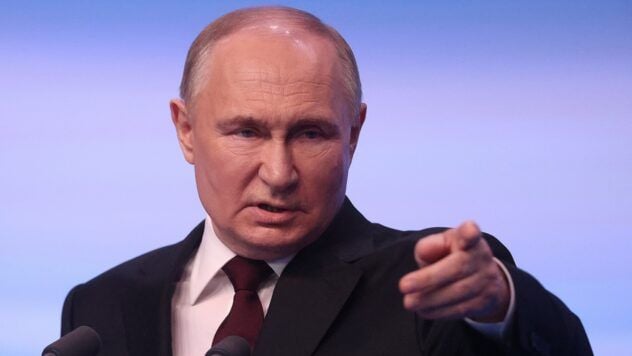
With the Kremlin's growing military ambitions, the threat of a direct war between Russia and NATO is becoming increasingly real. While the Russian military-industrial complex is increasing the production of shells, drones and missiles, which will soon exceed the needs of the Russian army in Ukraine, the situation on the international arena is becoming increasingly tense. Especially after the US and Israel's strikes on Iran, Russia's ally.
Putin's aggressive statements
Putin is making increasingly aggressive statements. At the St. Petersburg International Economic Forum, he said directly: I consider Russians and Ukrainians to be one people, and in this sense, all of Ukraine is ours.
Against this backdrop, NATO leaders are meeting in The Hague. US President Donald Trump is expected to reaffirm NATO’s Article 5 mutual defense treaty. But speaking to reporters aboard Air Force One, he said: “What Article 5 commits us to depends on your definition.”
Now watching
“I’ll give you a precise definition when I arrive,” he said.
Such statements only fuel European doubts about the reliability of American guarantees. At the G7 summit in Canada, Trump even asked why Russia was not among the participants.
$1.5 trillion per year of war
Bloomberg Economics estimates that a war between Russia and NATO could cost the global economy $1.5 trillion in the first year—roughly the same as a full-scale Russian invasion of Ukraine.
The reasons are destruction in the war zone, a jump in energy prices due to the blockade of Russian supplies and the collapse of financial markets.
If the conflict spreads to other European countries, the losses will be even greater. Mass casualties, refugee flows, trade disruptions in the Baltic Sea, attacks on infrastructure are possible.
The scenario for the start of the war involves a provocation. For example, Russia could stage a stop of the Moscow-Kaliningrad train on Lithuanian territory, after which it could introduce troops “to protect its citizens.” Simultaneous attacks on Estonia and Latvia, a blockade of the Suwalki Corridor, and the seizure of islands in the Baltic Sea are also possible.
In response, the Baltics will activate Article 5, and Western countries – even in the absence of an immediate NATO response – will begin to defend themselves. A Russian strike response against NATO bases and critical infrastructure will only exacerbate the conflict.
The Kremlin's nuclear threats may deter some European capitals, but not the Alliance's eastern flank, which is used to Putin's blackmail.
Is war with NATO countries possible?
A direct attack on NATO territory remains unlikely, as Russia lacks the resources for a two-front war. However, some Russian military leaders have openly hinted that their goals are not limited to Ukraine.
NATO Secretary General Mark Rutte, German Chancellor Friedrich Merz and a number of European intelligence agencies believe that Russia could potentially launch aggression against the Alliance within five years. Denmark estimated the time frame for a possible local war with a neighboring country to begin at six months, and a larger threat to NATO at two years.
The Baltic states – Lithuania, Latvia and Estonia – remain the most vulnerable. They share borders with Russia and Belarus, and have historical and ethnic factors that fit Putin’s imperial thinking. An attack on them would automatically test NATO.
In the face of the attack, Trump may hesitate. A likely scenario is a post on Truth Social calling for “peace, not war” and calling on Europe to “talk to Vladimir.” Especially since he recently called Putin a friend who “can make a deal with Kiev” and rejected the idea of new sanctions.
Despite this, European governments continue to prepare. The Baltic states are already withdrawing from the international agreement banning mines, and NATO is planning to strengthen air defenses on its eastern flank. Russia, meanwhile, is strengthening military bases in Kaliningrad and on the border with the Alliance.

